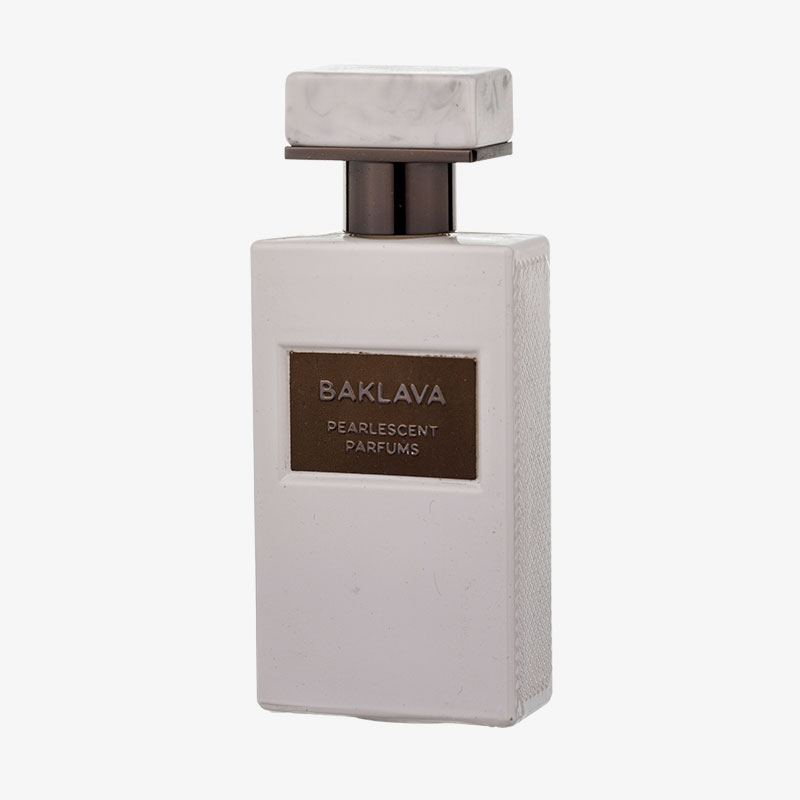The Art and Elegance of Perfume Bottles: A Symbol of Luxury and Craftsmanship
2025-03-25
Perfume bottles are more than just vessels for storing fragrances; they are miniature works of art that represent the fusion of creativity, luxury, and craftsmanship. From intricate designs to high-quality materials, a perfume bottle can elevate the experience of wearing a fragrance, making it a beautiful keepsake long after the perfume has been used. In this blog, we will explore the significance of perfume bottles, their history, and what makes them so special in the world of fashion and beauty.
The History of Perfume Bottles
Perfume bottles have a long history, dating back to ancient civilizations. The use of perfumes in ancient Egypt, Mesopotamia, and Rome can be traced to the desire to create beautiful fragrances for both personal use and religious ceremonies. However, it was not until the 16th and 17th centuries, during the rise of the modern perfume industry in France, that the design of perfume bottles began to evolve into the art form we know today.
In these early days, perfume was typically stored in small glass flacons, often adorned with decorative elements such as gold, silver, and gemstones. The bottles were as much a status symbol as the fragrance itself, with the wealthy and elite displaying their exquisite perfume bottles as a sign of their refinement and taste. Over time, glassmakers and designers began to experiment with new shapes, colors, and techniques, turning perfume bottles into iconic collectibles.
The Design and Craftsmanship Behind Perfume Bottles
One of the defining characteristics of perfume bottles is their intricate design and craftsmanship. These bottles are often made from high-quality glass or crystal, ensuring that they are both durable and visually stunning. Many perfume bottles are handcrafted by skilled artisans who specialize in glassblowing and engraving. The process of creating a perfume bottle is meticulous, with every detail carefully considered to enhance its aesthetic appeal.
Perfume bottles come in a wide variety of shapes and sizes, each designed to reflect the personality of the fragrance inside. Some bottles are simple and elegant, with clean lines and minimalistic designs, while others are elaborate and ornate, featuring intricate patterns, delicate engravings, or even sculptural elements. The shape of the bottle is often symbolic, with designs inspired by nature, architecture, or historical references. For example, some perfume bottles are shaped like flowers, animals, or ancient relics, paying homage to the history and culture behind the fragrance.
The use of color in perfume bottle design is also significant. Clear glass allows the fragrance’s color to shine through, while tinted glass or frosted finishes can create a more mysterious or luxurious look. Gold, silver, and other metallic accents are often added to enhance the bottle's opulence, making it a statement piece in its own right.
The Role of Perfume Bottles in Luxury and Fashion
Perfume bottles are often seen as an extension of the brand's identity. Luxury perfume houses like Chanel, Dior, and Guerlain invest significant resources in designing bottles that complement the high-quality scents inside. The bottle becomes a reflection of the brand's heritage, values, and aesthetic vision. In many cases, perfume bottles are as coveted as the fragrance itself, with limited edition releases and collector's items becoming highly sought after by perfume enthusiasts and collectors around the world.
The perfume bottle is also an integral part of the marketing strategy for fragrance brands. The visual appeal of a perfume bottle can attract customers and create a memorable experience. In fact, the bottle often plays a key role in the overall marketing concept of a fragrance, influencing how it is perceived in the market. For example, a sleek, modern bottle may convey a sense of sophistication and innovation, while an ornate, vintage-inspired bottle might evoke feelings of nostalgia and timeless elegance.
Collecting Perfume Bottles: A Passion for Connoisseurs
For many fragrance lovers, collecting perfume bottles has become a passion. Vintage and rare perfume bottles, especially those from famous perfume houses, are highly prized by collectors. These bottles not only hold the memories of their fragrances but also represent the evolution of perfume bottle design over the years. Collectors often seek out bottles from specific time periods or limited-edition releases, making perfume bottle collecting a niche yet growing hobby.
Some perfume bottles are so rare and valuable that they can fetch thousands or even millions of dollars at auction. One of the most famous examples is the "Jean Patou's Joy," a perfume launched in 1929, which was presented in an exquisite Baccarat crystal bottle. This particular bottle is considered a masterpiece of design and craftsmanship, and its rarity makes it highly coveted by collectors.
Perfume Bottles as Gifts and Keepsakes
In addition to their role in luxury and collecting, perfume bottles are also cherished as meaningful gifts and keepsakes. A beautifully designed perfume bottle can be a thoughtful and personal gift for a loved one, with the bottle serving as a symbol of the recipient’s unique taste and style. Many people keep perfume bottles long after the fragrance has been used, displaying them as decorative pieces in their homes or passing them down through generations.
Perfume bottles can also hold sentimental value, as they often become associated with special moments or memories. Whether it's a beloved fragrance worn on a special occasion or a perfume bottle that belonged to a loved one, these bottles can serve as lasting reminders of cherished experiences.
Sustainability in Perfume Bottle Design
As sustainability becomes a growing concern across all industries, the perfume industry is also taking steps toward creating more eco-friendly perfume bottles. Many brands are now focusing on using recyclable materials, such as glass, to create their bottles, and some are even exploring the use of biodegradable or sustainable packaging options. Refillable perfume bottles have also become a popular trend, allowing consumers to reduce waste by reusing their bottles and refilling them with fragrance.
By adopting more sustainable practices, the perfume industry can ensure that its beautiful bottles are not only aesthetically pleasing but also environmentally responsible. This shift toward sustainability is a positive step toward preserving both the art of perfume bottle design and the planet.
Conclusion
Perfume bottles are much more than functional containers; they are an essential part of the fragrance experience, blending art, luxury, and craftsmanship into an iconic product. The design and beauty of a perfume bottle can enhance the fragrance it holds, making it a statement piece in its own right. Whether as a symbol of luxury, a collectible, or a cherished gift, perfume bottles continue to captivate and inspire those who appreciate the finer things in life. In a world where personalization and aesthetics are increasingly valued, perfume bottles will remain a timeless symbol of elegance and sophistication.



